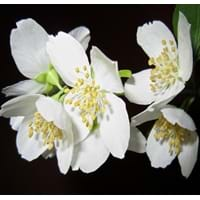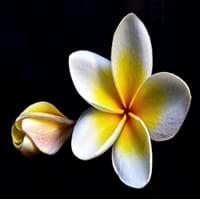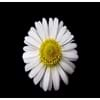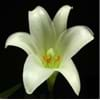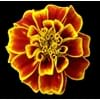Color
White, Yellow
Orange, Pink, White, Yellow
Color Meaning
White - Purity and Innocence, Yellow - Happiness and Friendship
Orange - Satisfaction and Passion, Pink - Sensitivity and Love, White - Purity and Innocence, Yellow - Happiness and Friendship
Fragrance
Aromatic
Floral
Line
Not Available
Not Available
Silhouette
Not Available
Not Available
Blossom Texture
Not Available
Not Available
Form
Not Available
Not Available
Sunlight
Full Sun
Full Sun
Watering
Enough
Diligently
Type of Soil
Loamy
Well-drained
Essential Fertilizers
Phosphorus
Phosphorus
Common Pests and Diseases
List of Pests
Aphids, butterflies, Caterpillars, Mites, moths, Scale, Whiteflies
Mealybugs, Scale, Slugs, Snails, Spider Mites, Thrips
List of Diseases
blight, Nematodes, Wilt
Gray Molds, Powdery Mildew, Rust, Stem Rot
Bloom Time
All Summer Season, Spring Season, Winter Season
All Summer Season, Fall Season
Origin
China, Himalayas, Tibet
Brazil, Caribbean, Central America, Mexico, South America
Interesting Facts of
- Jasmine releases intoxicating perfume at nightand thus also known as the "Queen of the Night" in India.
- The name Jasmine is derived from the Persia 'yasmin' which means a fragrant flower.
- The flower Plumeria was named in honor of Charles Plumier who was a French botanist.
- Plumeria flowers smell more at night and are drought tolerant.
- According to folk literature, Plumerias provide shelter to ghosts and and demons.
Lifespan
Perennials - a plant that lives for three or more years
Perennials - a plant that lives for three or more years
Flower Meaning
Not Available
Astrological Flower
Not Available
Birth Month Flower
Not Available
Flower Availability
Not Available
Uses
Not Available
Not Available
Health Benefits
Good remedy for Diarrhea, Reduces risk of cancer
Cures Constipation, Good remedy for Diarrhea
Medicinal Uses
Acts as a antidepressant, Acts as a antispasmodic, Acts as an Astringent
Acts as an anti-inflammatory, It is Antibacterial
Culinary Uses
Used as flavor food in deserts and ice creams
Added in candies, Included in wines and cocktails, Used in salads, soups and sandwiches, Used in teas
Design Uses
Not Available
Cosmetic Uses
Best for Dry sensitive skin, Softens skin, Used in creams, hand lotions and in essential oils, Used in Perfumes, Used in shampoos and soaps
Best for Dry sensitive skin, Good for Hair growth, Softens skin, Used in Perfumes, Utilized in making essential oils
Occasional Uses
Decoration, Wedding
Decoration
Allergy
Asthma, Headache, Itching, Runny nose, Sinus pain, Sneezing
NA
Common Name
Not Available
Scientific Name
Jasminum
Plumeria Rubra
Sub kingdom
Tracheobionta
Tracheobionta
Super Division
Spermatophyte
Spermatophyte
Division
Magnoliophyta
Magnoliophyta
Order
Scrophulariales
Gentianales
Class
Magnoliopsida
Magnoliopsida
Family
Oleaceae
Apocynaceae
Sub Family
NA
Rauvolfioideae
Genus
Not Available
Not Available
Number of Species
Not Available
Not Available
More about Jasmine and Plumeria Facts and color
You must be curious to know more about Jasmine and Plumeria facts and color. flowers.comparespecies.com will let you know all the Interesting Facts about Jasmine and Plumeria. Jasmine comes in White, Yellow colors whereas Plumeria flowers are with Orange, Pink, White, Yellow colors. Other Jasmine and Plumeria facts will definitely amuse you.
Jasmine and Plumeria growing conditions
Absolute growing condition is the only key to keep plants in good health and in good shape. Let’s learn about essential Jasmine and Plumeria growing conditions. Jasmine requires Full Sun and Enough watering with 5.50 of Loamy soil. Plumeria needs Full Sun and Diligently watering with 5.50 of Well-drained soil. Get other Jasmine and Plumeria facts in the sections below.
Jasmine and Plumeria Facts
Want to know about Jasmine and Plumeria facts? Get all the Jasmine and Plumeria facts here.
Jasmine and Plumeria Classification
After knowing about various Jasmine and Plumeria facts, let's study their classification. Based on genetic and physical features, Jasmine and Plumeria classification starts with knowing their scientific name. The scientific name of Jasmine and Plumeria is Jasminum and Plumeria Rubra respectively. Jasmine belongs to Oleaceae family whereas Plumeria falls under Apocynaceae family. Also check out Flowers by Color so as to plant colorful aroma in the garden.
